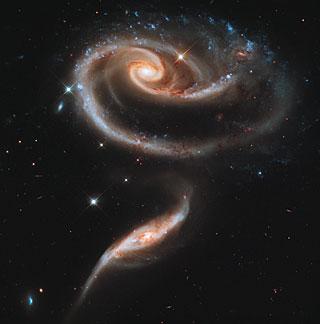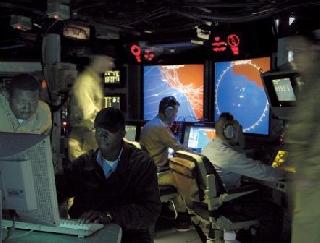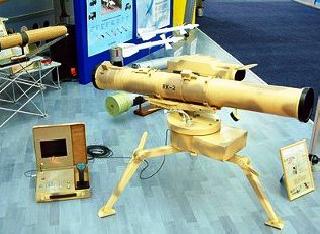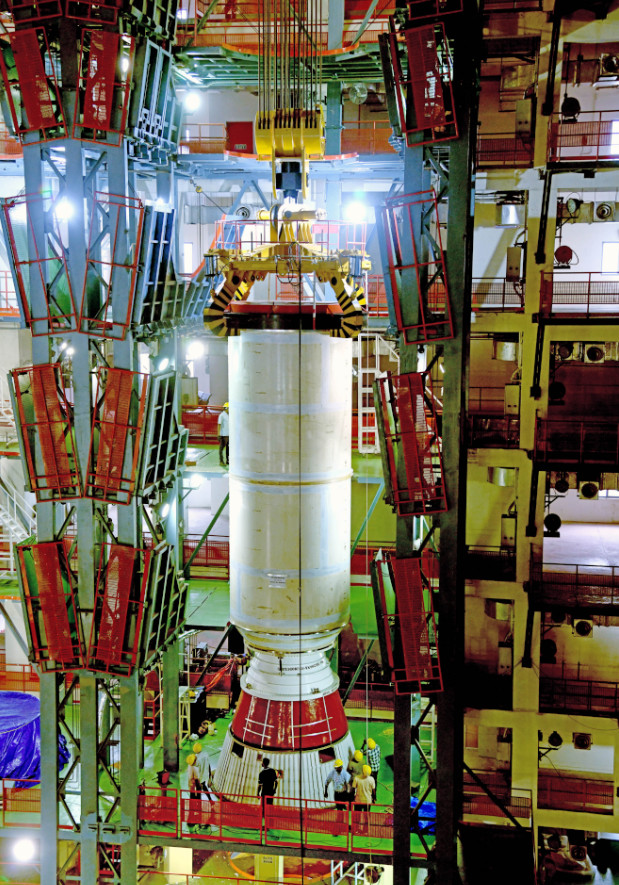
This image of a pair of interacting galaxies called Arp 273 was released to celebrate the 21st anniversary of the launch of the NASA/ESA Hubble Space Telescope.
WASHINGTON (BNS): As astronomers mark the 21st anniversary of the Hubble Space Telescope, they have scooped on an amusingly “photogenic” group of interacting galaxies called Arp 273.
The new image, acquired by Hubble on 17 December 2010, and released ahead of its 21st birthday, focuses on the bunch of galaxies lying in the constellation Andromeda around 300 million light-years away from Earth.
The larger of the galaxies, called UGC 1810, has a disc that is tidally distorted into a rose-like shape by the gravitational pull of a companion galaxy below it, known as UGC 1813.
A series of uncommon spiral patterns in the large galaxy are a telltale sign of interaction. Its large, outer arm appears partially as a ring, a feature that is seen when interacting galaxies actually pass through one another. This suggests that the smaller companion actually dived deeply, but off-centre, through UGC 1810.
The inner set of spiral arms of UGC 1810 is highly warped out of the plane, with one of the arms going behind the bulge and coming back out the other side.
How these two spiral patterns connect is still not precisely known.
The image also shows swathe of blue jewels across the top of UGC 1810 which are intensely bright and hot young stars. These massive stars are glowing fiercely in ultraviolet light.
Even the smaller galaxy, UGC 1813, shows distinct signs of intense star formation at its nucleus, perhaps triggered by the encounter with the companion galaxy.
A possible mini-spiral may be visible in the spiral arms of UGC 1810 to the upper right. It is noticeable how the outermost spiral arm changes character as it passes this third galaxy, from smooth with lots of old stars (reddish in colour) on one side, to clumpy and extremely blue on the other.
The larger galaxy in the UGC 1810–UGC 1813 pair has a mass that is about five times that of the smaller galaxy. The image shows a tenuous tidal bridge of material between the two galaxies that are separated by tens of thousands of light-years from each other.
The Hubble telescope, launched by space shuttle Discovery on April 24, 1990, has captured several cosmic wonders to date, thereby contributing immensely to the world of astronomy.
 Previous Article
Previous Article Next Article
Next Article











The Indian Air Force, in its flight trials evaluation report submitted before the Defence Ministry l..
view articleAn insight into the Medium Multi-Role Combat Aircraft competition...
view articleSky enthusiasts can now spot the International Space Station (ISS) commanded by Indian-American astr..
view article